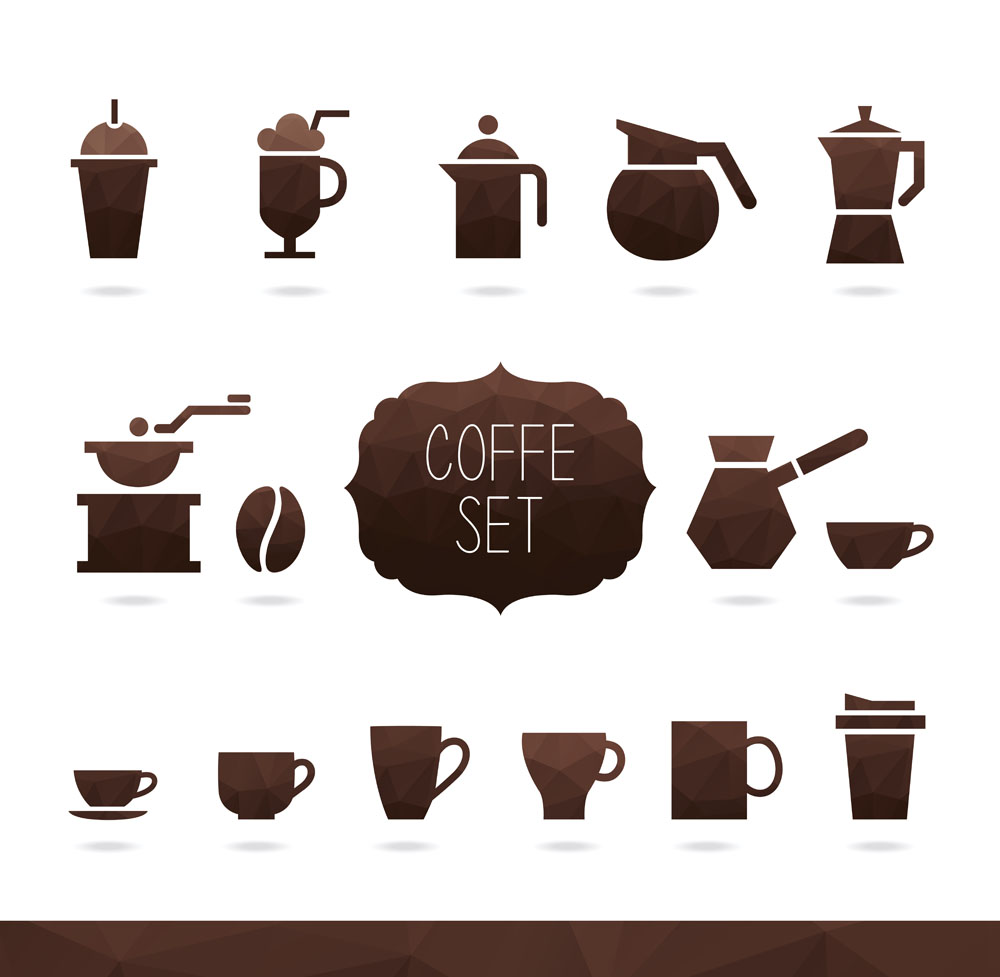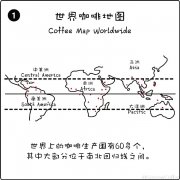How to record coffee cup meter and flavor description of professional coffee
During the cup test, all the conditions for brewing coffee are tested by the same standard, and the cup test is also a way of brewing coffee. Since it is brewing coffee, we must pay attention to how to minimize the differences that may be caused by human factors. Here are a few points to pay attention to.
The fineness of coffee particles measured in the cup is based on hand pulping. If you use a general bean grinder, you can choose the No. 3 setting. If the coffee is ground too finely, the surface will fall in the steaming stage, and if it is too thick, after the dregs are broken and salvaged, the coffee will continue to float up.
The quantity is generally based on 5 cups. With the tester's understanding of the sample, the cup test quantity can be adjusted to 3-5 cups. During the initial practice, the cup tester can carry out the cup test practice from two kinds of samples, so that the tester can adjust the differences in the process. Wait until the sample difference becomes smaller, and then slowly increase the number of samples.
When injecting water, it is necessary to control the uniformity of coffee particles by water, just like hand flushing, if the flow can be stably controlled, the degree of extraction of the same coffee particle will be relatively improved. if it is found that there are some powder layers or particles on the surface that are not affected by water, then the extraction degree of the whole cup of coffee will also be affected, and the flavor will not be complete.
The purpose of breaking the residue is to capture the aroma of coffee deposited on the bottom of the slag when breaking the surface, and the aroma deposited in the powder will be instantly released at the moment of breaking the residue, so the action of breaking the residue should not be too large and complex, and the times and strength of stirring should be fixed. Excessive stirring will increase the contact area and time of water and coffee particles, which will affect not only the extraction rate, but also the cup test effect. In the process of cup testing, we taste the aroma of dry incense, wet incense and broken residue, and extract the advantages of the tested object as much as possible, if the description of the aroma cannot be described with accurate adjectives, you can use adjectives you know to describe it.
Everyone's recognition of aroma is subjective, just as it varies from person to person, and there will be a polarized reaction, so in the initial practice of cup testing, please first take the part of the aroma as a reference. first record the aroma felt in dry incense, wet incense and broken residue.
Then there is the focus of the cup test: the consistency of the taste and the location of the sweet and sour, the number of samples depends on the individual's familiarity with the coffee beans, if you are not familiar with the coffee beans, you will naturally want the number of samples to be a little more. to help you confirm the consistency of flavor, this is also testing the quality stability of the coffee beans. Generally speaking, it starts with three samples and confirms the distribution of sour, sweet and bitter on the tongue by sipping.
After drinking the first cup of sample, try to distinguish whether there is sour, sweet and bitter, and then find out the corresponding position by the distribution map of the left tongue. Then confirm whether the position is the same by the second cup sample, and drink the third cup sample in the same way. Each cup of sample is based on the principle of drinking once, and the second round is confirmed after one round.
About the perception of the tongue: the distribution of the sour, sweet and bitter feelings of the tongue is actually different from the position of everyone's impression. Usually we will feel the sweet taste at the tip of the tongue, the sour on both sides of the tongue, and the bitter at the root of the tongue, but after tasting it carefully, we will find that there is a sense of sour, sweet and bitter in every position of the tongue, so when we are used to feeling sour, sweet and bitter in the cup. It will be confirmed by the position of the front, middle and back of the tongue.
Next, use the table to make the simplest cup test correction.
When tasting, we first describe the sour, sweet and bitter position, and then use the comparison between the sample and the sample to confirm the difference. when the water injection and slag breaking actions are the same, the sour, sweet and bitter position of all samples should also be the sour, sweet and bitter. If there is a large range of differences, you need to make corrections from water injection and slag breaking first, and then use the table to make the simplest correction.
COFFEE records the information of coffee beans tested, such as producing area, variety, roasting degree. Wait.
ACIDITY confirms whether there is sour taste and records the strength of sour taste.
SWEETNESS confirms the sweetness and records the sweetness.
BITTERNESS confirms the bitterness and records the bitterness.
The advantages of PRO overall cup testing.
The disadvantage of COM whole cup test.
The overall taste of IMP needs to be strengthened.
AROMA aroma record.
Forms can be made by themselves, or you can refer to standard forms, and then choose a few items that pay more attention to or make it easy for you to distinguish, from simple to complex, and then slowly increase the evaluation items after proficiency.

Important Notice :
前街咖啡 FrontStreet Coffee has moved to new addredd:
FrontStreet Coffee Address: 315,Donghua East Road,GuangZhou
Tel:020 38364473
- Prev

Factors affecting hand-brewing Coffee
Today we are going to do an experiment to test what affects the taste of hand-brewed coffee. Both groups are soaked coffee with the same coffee beans, and the extraction time is two minutes. The first is stirring soaking, and the second group is static soaking. The first group was counterclockwise one minute before, and then poured the coffee into the v60, while the second group was stationary but stirred in the last ten seconds.
- Next

How to choose the floral vat
The common jars in the pre-market can be roughly divided into three types (sharp mouth, round mouth, triangular flat mouth), and the cylinder type of different pattern application is different. Many baristas like the sharp mouth to pull the flower jar, feel that the mouth is sharp, the wall is thick, appear professional, buy one after another. They show off one after another on various occasions, but the probability of failure is very high, and some even use today's poor condition as an excuse. But in fact, due to the sharp mouth pull
Related
- Beginners will see the "Coffee pull flower" guide!
- What is the difference between ice blog purified milk and ordinary milk coffee?
- Why is the Philippines the largest producer of crops in Liberia?
- For coffee extraction, should the fine powder be retained?
- How does extracted espresso fill pressed powder? How much strength does it take to press the powder?
- How to make jasmine cold extract coffee? Is the jasmine + latte good?
- Will this little toy really make the coffee taste better? How does Lily Drip affect coffee extraction?
- Will the action of slapping the filter cup also affect coffee extraction?
- What's the difference between powder-to-water ratio and powder-to-liquid ratio?
- What is the Ethiopian local species? What does it have to do with Heirloom native species?

